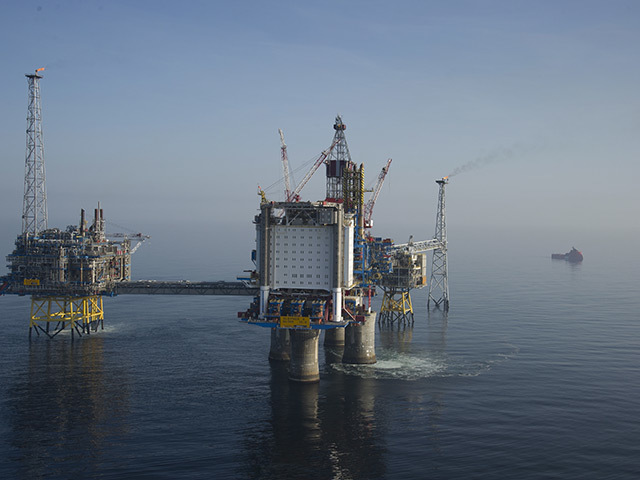
To implement carbon capture and storage (CCS) successfully, each underground repository will need careful appraisal based on its unique history and setting, according to researchers from the University of Bristol.
CCS has been widely heralded as a new technology for reducing greenhouse gas emissions. In an effort to help slow climate change, human-produced carbon dioxide (CO2) is captured at point-source emitters like power stations and sequestered in underground rocks.
In porous rocks like sandstone, the CO2 is trapped in tiny spaces or pores, which act like a sponge and soak up the injected fluid.
In 2000, one of the first commercial examples of this technology was conducted in Weyburn, Saskatchewan Province, Canada, where about three megatonnes of CO2 (the equivalent of emissions from 500,000 cars) are successfully sequestered every year.
The CO2 injection is in two sites, Cenovus Energy owned Weyburn field and Apache-owned Midale field. The EOR has increased production from Cenovus’s Weyburn field by 16,000-28,000 barrels of oil per day and by 2,300 to 5,800bpd for Apache’s Midale field.
And it is the team at Bristol that has played a key research role in developing methods for monitoring the CO2 migration and storage in this oil and gas reservoir complex.
In a just-published paper in the Proceedings of the National Academy of Sciences, Dr James Verdon and colleagues from Bristol, the Geological Survey of Canada, the British Geological Survey and BP Alternative Energy compare results from the world’s three largest CCS projects.
Their study finds that not all sites are equal and successful implementation of CCS requires careful appraisal.
For the approach to work the gas must remain trapped for thousands of years, but some geoscientists have argued that the injection process could increase the pressure enough to open fractures that will allow the CO2 to escape.
It happens that, in January 2011, a report was released that Weyburn was leaking CO2 at the surface after gas bubbles, algae blooms and dead animals were found around a man-made pond on a farm around the injection site.
A private consultancy firm concluded that the CO2 was from Weyburn due to CO2 isotopic analysis. However, pre-injection ground levels of CO2 have been shown to have the same isotopic ratio. The leaking CO2 is still being investigated if it could belong to the injected CO2.
To address the risk of CO2 migration through opened fractures, Dr Verdon and colleagues examined the “geomechanical deformation” at three commercial-scale CCS sites that inject more than a megatonne of CO2 underground per year.
They are the Sleipner field in the Norwegian North Sea; Weyburn, and the In Salah field in Algeria.
It was found that these three sites have each exhibited very different responses, highlighting the need for systematic geomechanical appraisals prior to gas injection.
While showing no signs of leakage (according to the Bristol team, that is), the Weyburn site has shown a complicated response, due to a history of 50 years of oil production prior to CO2 injection.
At the In Salah site, slower fluid flow means that pressures can build up, and there is evidence for fracturing in and around the reservoir, and uplift of several centimetres at the surface has been seen from satellite monitoring.
The size of the Sleipner site, and the excellent flow properties means that approximately one megatonne of CO2 can be stored every year with little response from the subsurface.
This variability of response means that future large-scale CCS operations will need to conduct comprehensive and on-going monitoring to ensure continued integrity of underground storage sites, according to the authors.
Dr Verdon said: “Existing commercial CCS sites have shown that, from a technical perspective, it is possible to sequester CO2 in underground rocks. However, to make a dent in humankind’s total emissions, billions of tons of CO2 must be stored every year. The challenge is therefore to find 3,000 more sites just like Sleipner.
“Every future CCS site will have a different geological setting, and our study has shown that this can lead to very different responses to CO2 injection. There is not likely to be a ‘one-size-fits-all’ approach to CCS. Instead, each future site must be judged on its merits: some may be very effective for storing large volumes of CO2, but some may be more limited in the amount of CO2 they can take.”
Dr Mike Kendall, co-author of the report prepared by the Bristol team, added that their study underscores the importance of long-term monitoring at any CCS storage site.
“Regulators have yet to impose long-term seismic monitoring guidelines that are necessary to ensure secure storage,” he added.
This research was supported by the UK’s Natural Environment Research Council and the Petroleum Technology Research Council of Canada.
Recommended for you
